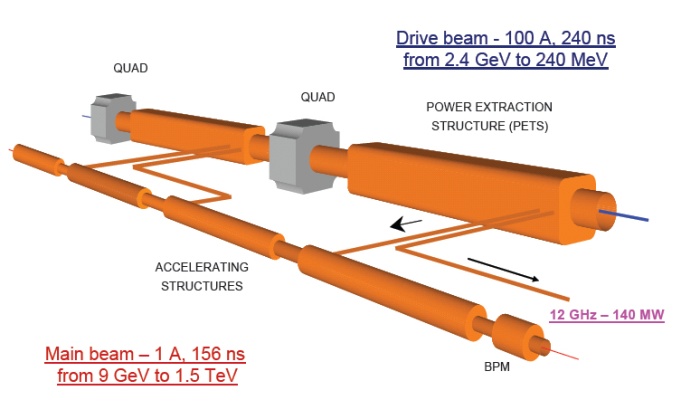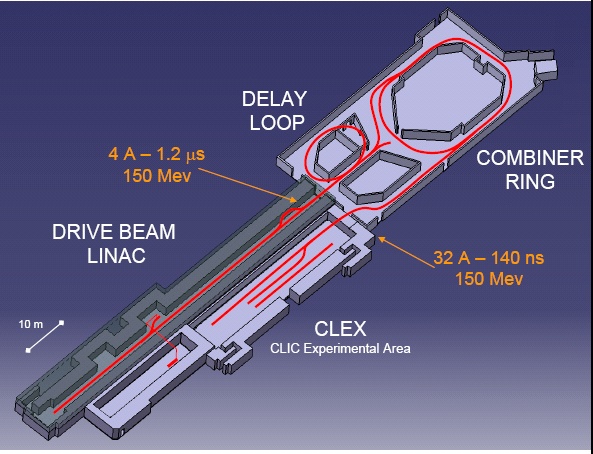Director's Corner
13 December 2007
 Barry Barish |
A more integrated approach toward an energy frontier lepton collider
All of particle physics is poised for the impending first explorations of the trillion-electronvolt (TeV) energy scale at CERN’s Large Hadron Collider. Within the next couple of years, the LHC will lead the way in opening up this new frontier for particle physics. The early results should help us determine what is required of a complementary lepton collider, in order to best address the new physics. The combination of the two explorers, as we have seen in past generations of colliders, will enable us to fully exploit the science of this new energy regime. Based on a great deal of information from both theory and experiment, we have very good reason to expect that a 500 billion-electronvolt (GeV) electron-positron collider, upgradeable to 1 TeV, will be the right match. This has given us strong motivation to develop the design for a collider like the ILC. Nevertheless, we must be prepared for what to do if LHC discoveries point strongly to the need for higher energies, maybe a multi-TeV lepton collider?
Even though the precision tests of the standard model strongly indicate rich physics within the scope of the ILC, the question of what energy will be required for a lepton collider is not a new one. In any case, results from LHC will soon inform us, and R&D toward achieving higher energies has been pursued for some time. Two approaches are under study. One involves an alternative design for a linear electron-positron collider, and the other is the possibility of developing a muon collider. Both efforts are based on very clever ideas, but ones that are very hard to implement and will require significant advances in accelerator physics before a major facility can be undertaken. The muon collider offers a way to make intense neutrino beams. The technical advances needed however, especially in terms of beam cooling, make the time scale for realising a multi-TeV muon collider very long and the feasibility uncertain. The other possibility, a variant of an electron-positron collider that could potentially provide higher gradients, has been under study at CERN, known as the Compact Linear Collider or CLIC.
The main technical feature of CLIC is the two-beam acceleration scheme. The radiofrequency power for the main linac is extracted from a secondary, low-energy, high-intensity electron beam running parallel to the main linac (instead of using klystrons). The power is extracted from the beam by special extraction and transfer structures. For a 3-TeV collider, CLIC scientists envision 22 such drive beams, each of which provides enough power to accelerate the main beam by roughly 70 GeV.
There are many technical challenges that must be solved to make this scheme viable. In fact, an R&D programme has been underway for more than 20 years now to develop this technology. Yet the basic feasibility still needs to be established. Recently, efforts to demonstrate feasibility received increased attention at CERN with a goal to prove the technology by roughly 2010, a similar timescale for achieving initial LHC results and the ILC Engineering Design Report.
The main goals of the CLIC R&D programme are to demonstrate drive beam generation (fully loaded acceleration, bunch frequency multiplication), to test CLIC accelerating structures and to test power production structures (PETS) in a test facility called CTF3 that is under development at CERN. The CLIC group recently lowered the main linac RF frequency from 30 GHz to 12 GHz, reduced the accelerating field from 150 MV/m (Megavolts per metre) to 100 MV/m and changed the resulting length for a 3-TeV machine from 34 km to 48 km. These changes are in response to the many problems they encountered at the higher frequencies.
Although the work to develop the ILC design and the R&D to demonstrate CLIC feasibility has little in common technically, there are close relations between the two groups. This is especially the case because Jean-Pierre Delahaye, the CLIC Study Group Leader, is an active and important member of the ILC Global Design Effort.
For some time now, I have been coming to view that the ILC and CLIC efforts should be more closely integrated. Beyond the feasibility tests for CLIC, their emerging work will involve physics studies, detector concepts and a first-order design of the rest of the accelerator complex. For this work, CLIC faces many of the same issues we are dealing with for the ILC, with some significant differences due to the different technology and energy. Nevertheless, to best accomplish the work for both projects and to be best able to evaluate alternative approaches to the lepton collider, like a warm machine or CLIC, we should do all we can to integrate these R&D and design efforts.
When I visited CERN last month, I had the opportunity to have a meeting with the CLIC Extended Steering Committee, including CERN Global Design Effort members. I suggested that joint work between the ILC and CLIC could have benefits for both efforts. They responded positively, and a number of specific areas have been identified where both groups could benefit. It is clear that the timescale for a machine like CLIC, even if feasible, is much later than the ILC. So the reason to consider CLIC is for energy reach, if required.
Following my visit to CERN, I discussed these joint efforts with the GDE Executive Committee, and we agreed to the general idea. As a result, the GDE Project Managers will explore specific areas of collaboration with CLIC. An exchange of ideas has begun by email, and a meeting is now planned at CERN for February 2008 to explore specific areas of cooperation.
I am hopeful that closer relations will be forged between the two groups. Our ultimate goal is to develop a lepton collider that will complement LHC physics, and I believe closer integration with CLIC will further our goal of realising a linear collider -- whatever LHC physics tell us.
-- Barry Barish


